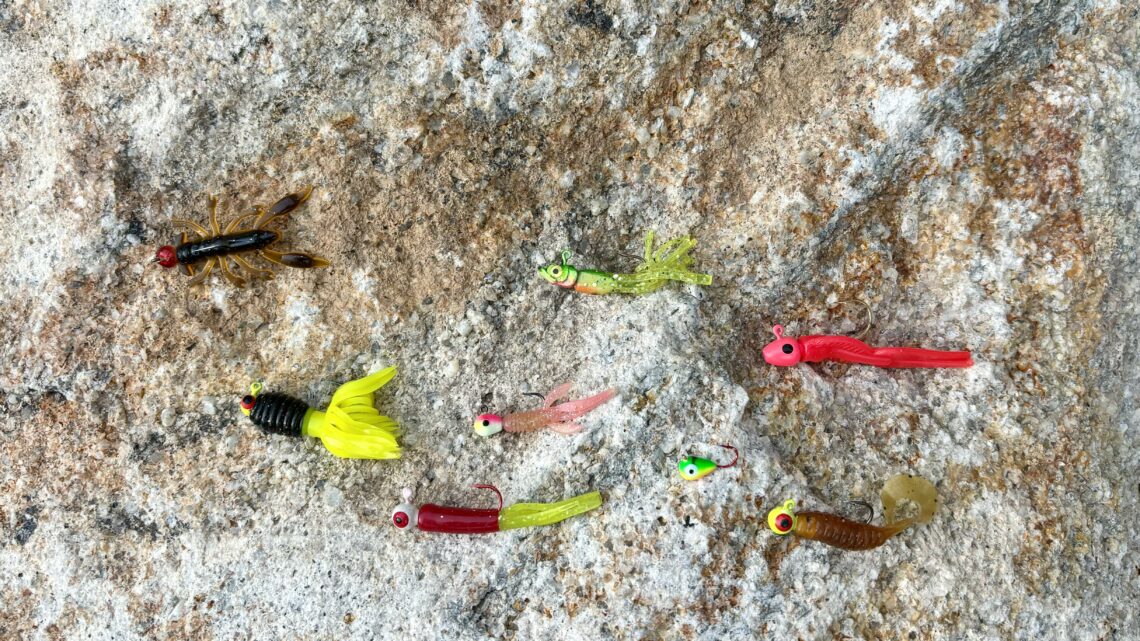
If there’s a universal lure every angler should carry in his or her tackle box, there’s a strong argument it should be a small jig. These versatile lures will be referred to in this article as “panfish jigs,” but the truth is they can be used to catch just about any species that swims. I once took a small tackle box of jigs with me to Belize, and used them to catch more than a dozen saltwater species from the beach!
Here in Idaho, small jigs are most commonly used to target the big three panfish species: crappie, bluegill and perch. They can be used to jig vertically from a boat in deeper water, fished under a bobber for shallower presentations, or fished on their own with a variety of retrieve styles. This versatility makes them a go-to choice for other species, too. It’s not uncommon to catch bass, catfish and trout on jigs (they are one of my go-to lures for trout fishing in alpine lakes).
What makes a good jig? Honestly, it’s not that complicated. The two main considerations are size and color. For size, I’ll use anything from a 1/8 ounce to micro jigs that are 1/64 or even 1/80 ounce. If the bite is tough, I generally like to size down. My favorite colors include fire tiger (perch pattern), red, chartreuse, black, white, and pink. Some of my go-to models include the Gitzit Lil Tough Guy, the Z-Man Micro Finesse series, Mr. Crappie tubes, and the VMC Tungsten Nymph. Jigs made of tungsten are useful when fishing deeper water and/or on ultralight gear, because they sink faster than lead.
Fishing with jigs is usually straightforward. Fish often eat them as they fall through the water column—and with panfish, the take can be very subtle, as they suck the lure in (and, if you aren’t quick on the trigger, spit it right back out). When I’m fishing deeper water with a vertical presentation, I like to use two jigs at once, about 18 inches apart. This helps them sink faster, allows you to try different colors, and sometimes even leads to double-ups! Many anglers tip their jigs with some kind of bait (a Power Bait nibble, a chunk of worm, a mealworm, or a piece of cut bait). It’s also smart to vary your retrieve by mixing in twitches, speeding up, slowing down or making contact with the bottom to trigger a strike.
Jigs are also critical for ice fishing, a topic we will be covering in detail in the weeks ahead. Until next time, tight lines!